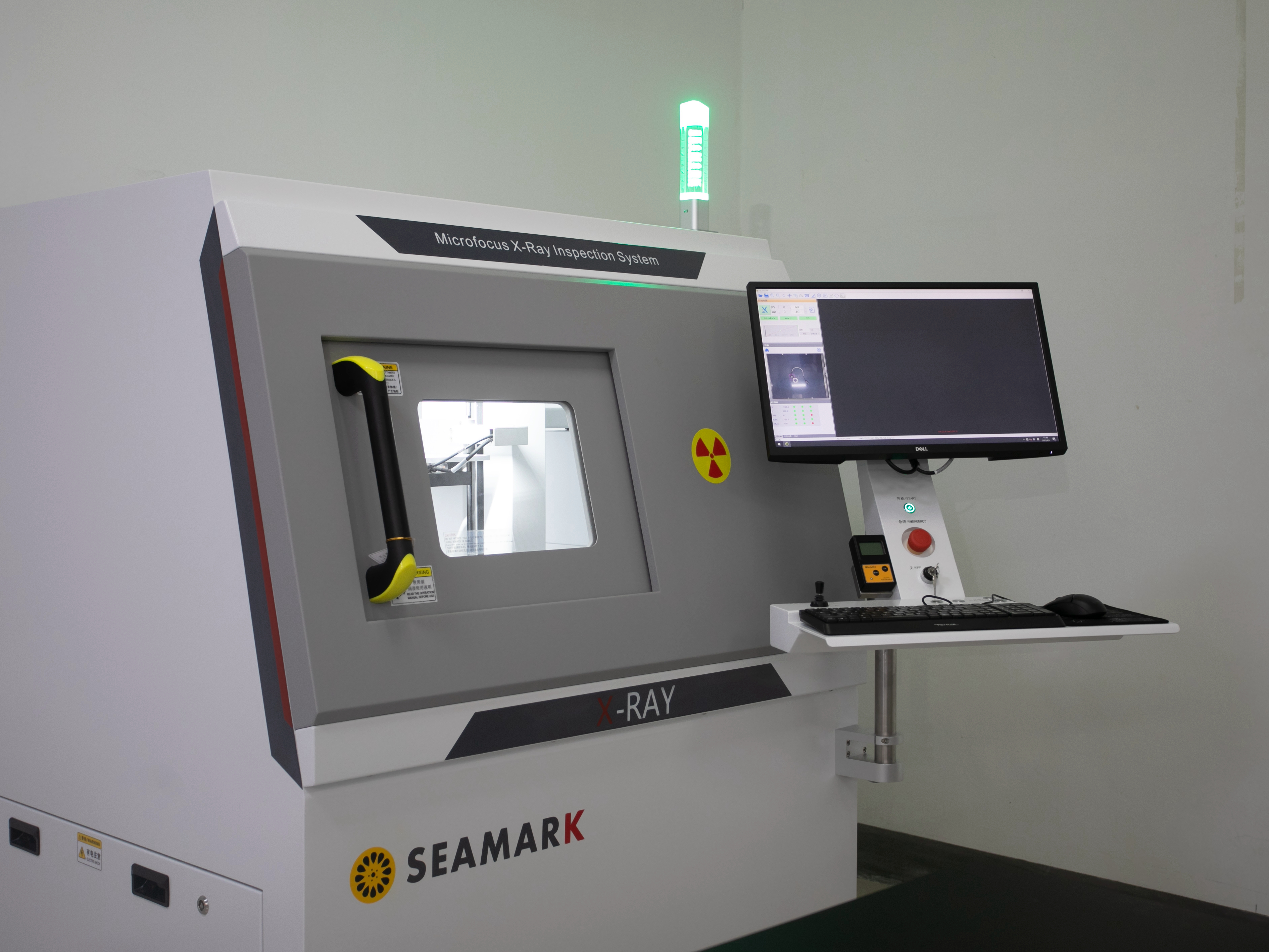Deep Defect Detection: X-ray Inspection for Internal Flaws in Custom Metal Parts
X-ray: Internal Flaw Detection
Sub-surface defects as small as 3 µm—gas pores, cracks, or inclusions—compromise reliability in aerospace, medical, and automotive components. These flaws often remain undetected until catastrophic failure occurs during operation.
Neway’s 450kV X-ray systems inspect aluminum die castings and other critical parts with 3 µm resolution, ensuring compliance with ASTM E94 and ISO 17636-2 standards for mission-critical applications.
Technical Specifications & Operational Excellence
System Configuration
X-ray Source:
YXLON MG452 (450kV closed tube)
Tungsten transmission target
Beam focus: 3 µm (microfocus mode), 15 µm (high-speed mode)
Detector:
Varex 4343 Flat Panel (2048×2048 pixels, 16-bit dynamic range)
DQE: 78% at 150 keV
Manipulator:
5-axis CNC stage (±5 µm positional accuracy)
Max load capacity: 150 kg
Scanning Protocol (ASTM E1695)
Energy Calibration:
Aluminum: 220 kV, 2.5 mA
Steel: 350 kV, 3.2 mA
Filter Optimization:
3 mm Cu + 1 mm Sn for beam hardening correction
Data Acquisition:
360° rotation with 0.1° increments (3,600 projections)
Exposure: 1.2 seconds/frame (8-frame averaging)
Reconstruction:
FDK algorithm (NVIDIA A6000 GPU accelerated)
Voxel size: 3–50 µm (adjustable)
Industry-Specific Applications
1. Aerospace Turbine Blade Inspection
Challenge: Detect sub-10 µm cooling channel blockages in Inconel 718 blades.
Solution:
Dual-energy scanning (300 kV + 450 kV) for material decomposition.
Achieved 100% NADCAP compliance for surface-treated components.
Result: Zero in-service failures across 5,000 blades (2023).
2. Medical Implant Porosity Control
Component: Ti-6Al-4V ELI spinal cages (ASTM F3001).
Process:
Quantify porosity <1% using VGSTUDIO MAX (ISO 5011).
Map pore distribution in 3D lattice structures.
Outcome: 0% rejection rate in 10,000-unit FDA audit.
3. EV Battery Housing Weld Inspection
Material: 6061-T6 Aluminum enclosures.
Metrics:
Detect lack-of-fusion defects >50 µm in laser welds.
Reduce scrap rate by 18% through die casting optimization.
Comparative Performance Analysis
Parameter | X-ray Inspection | Industrial CT | Phased Array UT |
|---|---|---|---|
Resolution (µm) | 3 | 5 | 500 |
Penetration (mm steel) | 120 | 150 | 300 |
Scan Speed (mins) | 2–5 | 15–30 | 5–10 |
Cost per Scan (USD) | 80–200 | 300–800 | 50–150 |
Standards Compliance | ASTM E94, ISO 17636-2 | ISO 15708-1 | ASME BPVC Section V |
Case Study: Reduced Brass 360 valve inspection time by 65% versus dye penetrant testing.
Smart Manufacturing Integration
1. AI-Powered Defect Recognition
Train YOLOv8 models on 50,000+ defect images:
Porosity (ASTM E505 Types A/B/C): 99.1% F1-score
Cracks (>30 µm): 98.7% detection rate
Real-time classification during high-volume production.
2. Digital Twin Correlation
Map X-ray data to FEA simulations:
92% correlation between CT voids and stress concentrations in 316L stainless brackets.
3. Blockchain Traceability
Embed DICONDE metadata into Hyperledger ledger for medical devices:
Full UDI compliance per FDA 21 CFR Part 11.
ROI Metrics (2023)
Aerospace:
$1.8M/year saved through pre-NDI crack detection.
Automotive:
40% faster PPAP approval for EV components.
Medical:
Zero recalls in 25,000+ Ti-6Al-4V implants.
Future Advancements
Multi-Energy CT:
Differentiate Cu/Zn ratios in brass alloys via dual 450kV/225kV scanning.
In-Line Automation:
Integrate with robotic arms for 24/7 mass production lines.
Conclusion
Neway’s 450kV X-ray systems redefine precision NDT, delivering µm-level defect detection from prototyping to serial production. With AS9100D and ISO 13485 certifications, we ensure components meet aerospace, automotive, and medical reliability thresholds.
FAQs
What’s the maximum part weight your X-ray systems handle?
How are hydrogen-induced cracks detected in titanium?
Can X-ray differentiate between material phases (e.g., α/β Ti)?
What radiation safety certifications do your labs hold?
Is cloud-based data analysis supported?

